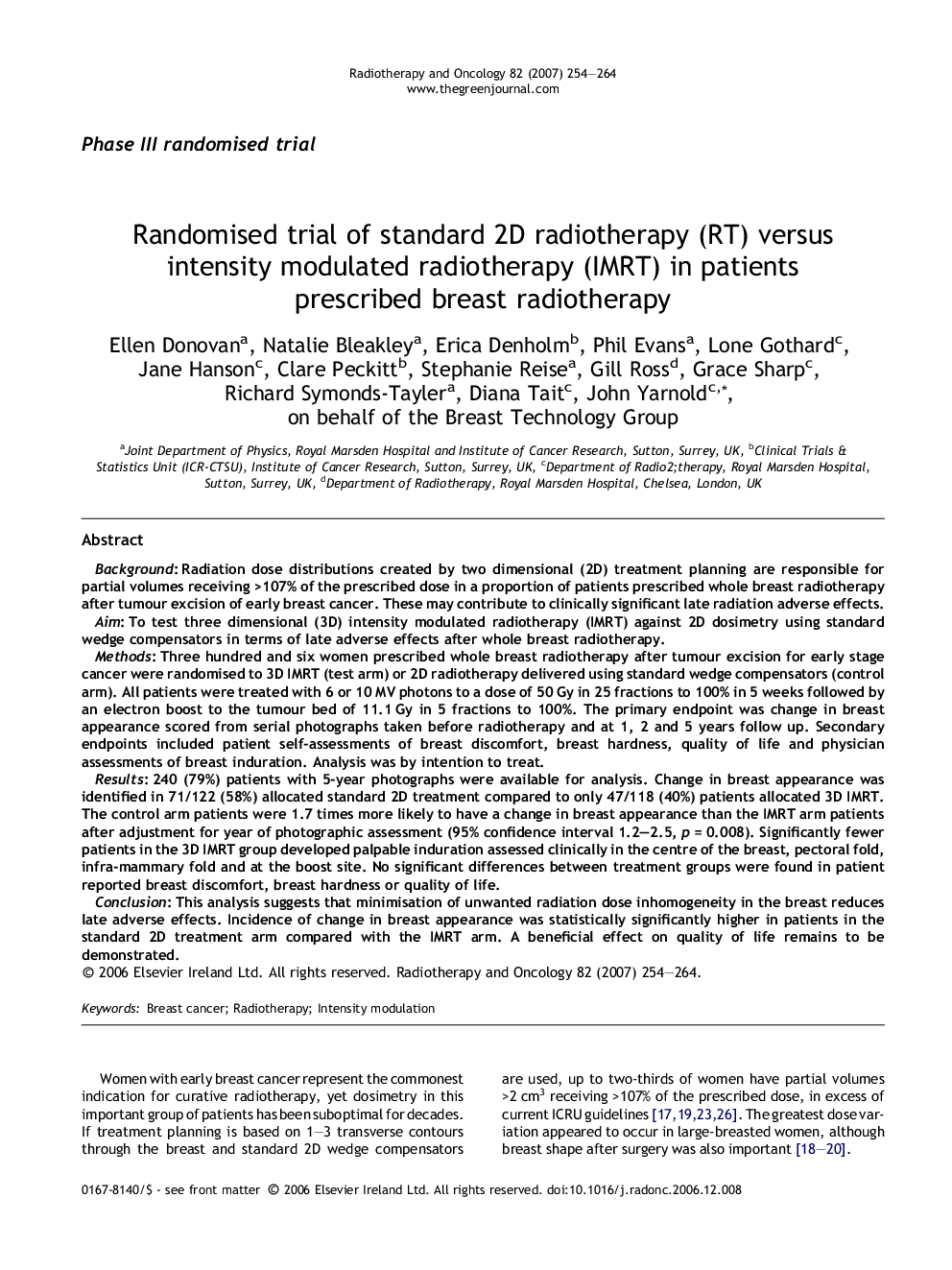| کد مقاله | کد نشریه | سال انتشار | مقاله انگلیسی | نسخه تمام متن |
|---|---|---|---|---|
| 2161078 | 1090903 | 2007 | 11 صفحه PDF | دانلود رایگان |

BackgroundRadiation dose distributions created by two dimensional (2D) treatment planning are responsible for partial volumes receiving >107% of the prescribed dose in a proportion of patients prescribed whole breast radiotherapy after tumour excision of early breast cancer. These may contribute to clinically significant late radiation adverse effects.AimTo test three dimensional (3D) intensity modulated radiotherapy (IMRT) against 2D dosimetry using standard wedge compensators in terms of late adverse effects after whole breast radiotherapy.MethodsThree hundred and six women prescribed whole breast radiotherapy after tumour excision for early stage cancer were randomised to 3D IMRT (test arm) or 2D radiotherapy delivered using standard wedge compensators (control arm). All patients were treated with 6 or 10 MV photons to a dose of 50 Gy in 25 fractions to 100% in 5 weeks followed by an electron boost to the tumour bed of 11.1 Gy in 5 fractions to 100%. The primary endpoint was change in breast appearance scored from serial photographs taken before radiotherapy and at 1, 2 and 5 years follow up. Secondary endpoints included patient self-assessments of breast discomfort, breast hardness, quality of life and physician assessments of breast induration. Analysis was by intention to treat.Results240 (79%) patients with 5-year photographs were available for analysis. Change in breast appearance was identified in 71/122 (58%) allocated standard 2D treatment compared to only 47/118 (40%) patients allocated 3D IMRT. The control arm patients were 1.7 times more likely to have a change in breast appearance than the IMRT arm patients after adjustment for year of photographic assessment (95% confidence interval 1.2–2.5, p = 0.008). Significantly fewer patients in the 3D IMRT group developed palpable induration assessed clinically in the centre of the breast, pectoral fold, infra-mammary fold and at the boost site. No significant differences between treatment groups were found in patient reported breast discomfort, breast hardness or quality of life.ConclusionThis analysis suggests that minimisation of unwanted radiation dose inhomogeneity in the breast reduces late adverse effects. Incidence of change in breast appearance was statistically significantly higher in patients in the standard 2D treatment arm compared with the IMRT arm. A beneficial effect on quality of life remains to be demonstrated.
Journal: Radiotherapy and Oncology - Volume 82, Issue 3, March 2007, Pages 254–264